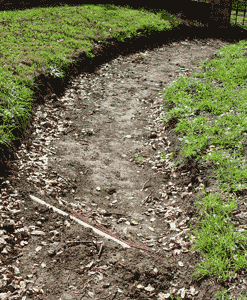Winter is a great time to tackle this project.
Outdoor living areas are one of the hottest trends in south Texas. Take advantage of the mild winters to complete the “floor” of your outdoor room or patio. A well-installed hardscape will be attractive and will provide many years of enjoyment. Just a note on lingo; Hardscape is a fancy word for Patio or walkway.
Pervious Hardscape
The choice of a pervious hardscape is preferred over solid concrete because the water that penetrates the ground is stored in the soil and made available to nearby plants. From a broader perspective, previous hardscapes also act as slow filters during rainstorms instead of contributing to fast runoff that contributes to pollution of creeks and streams and increases flooding.
Careful Installation
Just as a low maintenance landscape begins with good soil, a low maintenance hardscape begins with good installation techniques and selecting the right material for your needs. Dig down to remove several inches of soil and replace it with base (broken up native rock material). The base hardens to create a strong barrier for weeds. Place two to four inches of sand over the base to help flagstone or other embedded rocks settle securely.
Decorative Filler
Decorative material such as decomposed granite or pebbles can then be used to fill in spaces between the flagstone. Decomposed granite is a popular pervious hardscape material. The crushed stone is an attractive terra cotta color that contrasts beautifully with landscape plants and fills in spaces between larger stones. Other popular hardscape materials include flagstone, pavers, brick, cut stone, and gravel. Some new and creative materials include recycled tumbled glass (you can walk on it) and broken-up pieces of a sidewalk (you can walk on it too).




